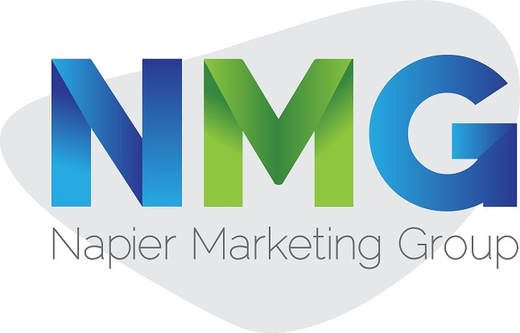6 Strategies for Improving Workplace Diversity and Inclusion for Individuals with Disabilities
In today's dynamic work environment, fostering diversity and inclusivity is paramount to driving innovation and understanding. Among the diverse groups that deserve attention are individuals with disabilities.
Employing people with disabilities in a supportive and welcoming environment benefits the company and fosters empathy and compassion in the broader community. Let’s take a look at some practical strategies for creating an inclusive workplace for people with disabilities.
Promote awareness and sensitivity
To foster an inclusive workplace, it is crucial to promote awareness and sensitivity about disabilities among all employees. A more empathic workplace could be achieved from promoting open discourse and training sessions that address prevalent assumptions and stereotypes.
Coworkers can benefit from one another's experiences and collaborate more successfully by developing a culture of understanding, which will help to reduce obstacles and promote respect among them. Employees can better understand the various perspectives of their coworkers through continuing activities like disability awareness campaigns and workshops, which promote an environment of inclusion and support.
Adopt inclusive recruitment practices
Building an inclusive workplace starts with the recruitment process. Companies should aim to create job advertisements and descriptions that are inclusive and welcoming to candidates with disabilities.
Emphasizing skills and qualifications rather than physical abilities ensures that all applicants are evaluated fairly. Partnering with disability-focused job boards and organizations can help broaden the talent pool and attract skilled individuals with disabilities, enriching the workforce with diverse perspectives and unique talents.
Employers should also implement blind recruitment techniques, removing identifying information from application materials to reduce unconscious bias and focus solely on applicants' skills and merits.
Offer continuous education and training
Employing people with disabilities in a supportive and welcoming environment benefits the company and fosters empathy and compassion in the broader community. Let’s take a look at some practical strategies for creating an inclusive workplace for people with disabilities.
Promote awareness and sensitivity
To foster an inclusive workplace, it is crucial to promote awareness and sensitivity about disabilities among all employees. A more empathic workplace could be achieved from promoting open discourse and training sessions that address prevalent assumptions and stereotypes.
Coworkers can benefit from one another's experiences and collaborate more successfully by developing a culture of understanding, which will help to reduce obstacles and promote respect among them. Employees can better understand the various perspectives of their coworkers through continuing activities like disability awareness campaigns and workshops, which promote an environment of inclusion and support.
Adopt inclusive recruitment practices
Building an inclusive workplace starts with the recruitment process. Companies should aim to create job advertisements and descriptions that are inclusive and welcoming to candidates with disabilities.
Emphasizing skills and qualifications rather than physical abilities ensures that all applicants are evaluated fairly. Partnering with disability-focused job boards and organizations can help broaden the talent pool and attract skilled individuals with disabilities, enriching the workforce with diverse perspectives and unique talents.
Employers should also implement blind recruitment techniques, removing identifying information from application materials to reduce unconscious bias and focus solely on applicants' skills and merits.
Offer continuous education and training
|
Creating an inclusive workplace requires continuous education and training. That’s why investing in the highly-beneficial functional capacity assessment NDIS program could prove to be a great decision. By empowering employees with knowledge, companies can foster a more inclusive and equitable work environment where everyone feels valued and respected.
Additionally, providing accessible resources, such as online learning modules or workshops, allows employees to further educate themselves on disability-related topics and inclusion best practices. |
Accommodate and embrace individual needs
Accommodating the individual needs of employees with disabilities is essential to fostering inclusivity. To identify particular changes that contribute to employees' success at work, employers should have a direct line of communication open with their staff.
These adjustments, whether they require making changes to the workspace, offering assistive technology, or putting in place flexible work schedules, not only provide employees with disabilities more agency, but also make the workplace more adaptive and productive for everyone.
In addition to personalized accommodations, creating an employee resource group dedicated to disability inclusion can offer valuable support, resources, and a sense of belonging for employees with disabilities.
Develop an inclusive culture
To build an inclusive workplace, fostering a culture of acceptance and understanding is paramount. By recognizing the contributions and accomplishments made by employees with disabilities, management can demonstrate their dedication to diversity and inclusion.
Sharing different viewpoints and experiences among coworkers can foster empathy and collaboration, enhancing the workplace and stimulating creativity and innovation. Enabling staff members to learn from one another and create ties that go beyond differences is possible with the implementation of mentorship and allyship programs.
Address stigma and raise awareness
Despite the progress made in disability inclusion, stigmas and misconceptions persist. Employers can have a significant role in resolving these challenges by planning educational initiatives and meetings that debunk myths and promote understanding.
Fostering empathy and removing obstacles can be accomplished by providing employees with opportunities to interact with people with disabilities outside of the office, such as through community volunteering. Companies can set an example and support a more inclusive and tolerant society by actively tackling stigmas and raising awareness.
In order to support efforts that challenge stereotypes, increase public understanding, and enable people with disabilities to realize their full potential, employers should also collaborate with organizations that advocate for people with disabilities.
Inclusivity is a collaborative endeavor that reaps enormous benefits. Businesses can create a thriving and compassionate work environment by embracing people with disabilities through awareness, accommodations, and education. Together, we can create a better future where diversity is celebrated and where every person has the freedom to use their individual abilities to advance the company and the larger community.
Let's keep advancing the cause of inclusivity by bringing about good change and building a more compassionate and just society for all. The road to disability inclusion is a never-ending one, but with each step we take, the basis for a more varied, creative, and harmonious workplace and society as a whole is strengthened.
Accommodating the individual needs of employees with disabilities is essential to fostering inclusivity. To identify particular changes that contribute to employees' success at work, employers should have a direct line of communication open with their staff.
These adjustments, whether they require making changes to the workspace, offering assistive technology, or putting in place flexible work schedules, not only provide employees with disabilities more agency, but also make the workplace more adaptive and productive for everyone.
In addition to personalized accommodations, creating an employee resource group dedicated to disability inclusion can offer valuable support, resources, and a sense of belonging for employees with disabilities.
Develop an inclusive culture
To build an inclusive workplace, fostering a culture of acceptance and understanding is paramount. By recognizing the contributions and accomplishments made by employees with disabilities, management can demonstrate their dedication to diversity and inclusion.
Sharing different viewpoints and experiences among coworkers can foster empathy and collaboration, enhancing the workplace and stimulating creativity and innovation. Enabling staff members to learn from one another and create ties that go beyond differences is possible with the implementation of mentorship and allyship programs.
Address stigma and raise awareness
Despite the progress made in disability inclusion, stigmas and misconceptions persist. Employers can have a significant role in resolving these challenges by planning educational initiatives and meetings that debunk myths and promote understanding.
Fostering empathy and removing obstacles can be accomplished by providing employees with opportunities to interact with people with disabilities outside of the office, such as through community volunteering. Companies can set an example and support a more inclusive and tolerant society by actively tackling stigmas and raising awareness.
In order to support efforts that challenge stereotypes, increase public understanding, and enable people with disabilities to realize their full potential, employers should also collaborate with organizations that advocate for people with disabilities.
Inclusivity is a collaborative endeavor that reaps enormous benefits. Businesses can create a thriving and compassionate work environment by embracing people with disabilities through awareness, accommodations, and education. Together, we can create a better future where diversity is celebrated and where every person has the freedom to use their individual abilities to advance the company and the larger community.
Let's keep advancing the cause of inclusivity by bringing about good change and building a more compassionate and just society for all. The road to disability inclusion is a never-ending one, but with each step we take, the basis for a more varied, creative, and harmonious workplace and society as a whole is strengthened.




